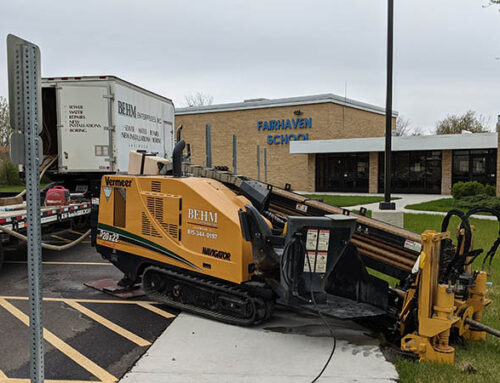Before breaking ground on a new project, you should locate all underground utilities. Performing this step is important because it can prevent problems such as electrical outages or even injuries and fatalities. You can start by reviewing your utility map. This process can be costly and time-consuming. Fortunately, there are many methods available for this purpose. Listed below are some tips to consider when locating underground utilities before starting your new project.
Identifying Underground Utilities
Calling 811 is a national call-before-you-dig phone number. To locate underground utilities, you can visit the 811 center’s website or call 811 if you live in a state that has this information available. You can then request the marking of the underground utilities. Calling ahead of time is the best way to avoid digging into underground utilities. Each state has its own regulations regarding the amount of time you should give before digging. Before digging, make sure to mark any underground utilities with brightly colored paint. The markings are only effective for 28 days and can fade with time. Furthermore, erosion and root growth can alter the path of buried lines. It is therefore crucial that you complete the excavation project within 28 days of utility line markings to ensure the safety of workers and property.
A well-marked underground utility is a major asset to the construction industry, but you also need to know how to identify it. It is important to call ahead and confirm the location of all underground utilities before horizontal directional drilling. The failure to do so can result in service outages, electrocution, or even a natural gas line rupture. In many jurisdictions, calling ahead is the only way to confirm whether underground utilities are present. Using a utility installation service is a stress-free way to ensure sewer lines and utilities are identified properly before drilling operations begin. In addition to preventing damages to underground utilities, communication lines are also located underground and should be identified before creating a bore plan.
In addition to locating underground utilities, you can use a utility locator to find the location of private underground utilities. The failure to locate a utility can result in significant costs and safety issues. In fact, the Common Ground Alliance’s annual report details how many strikes occur each year with utilities in the U.S. and Canada. Most utility strikes are caused by locating problems. If there are other active utilities in the surrounding area, the signal from a utility locator is interfered with.
Building and maintaining a comprehensive underground utility infrastructure in dense urban settings is not an easy task. Underground utility contractors have special knowledge and experience in burying infrastructure and are responsible for maintaining the safety of construction workers. A qualified underground utility contractor should also be familiar with different types of fill materials and know how to install pipe in them. This way, the risks and hazards are minimized. Further, a contractor will have the best idea of the exact location of underground utilities and can plan work accordingly.
Directional Drilling
After underground utilities are identified, drilling and boring can begin. Horizontal directional boring will have minimal surface disturbance and is a preferred method of trenchless technology. A drilling rig is brought to the location where water lines or utilities need to be installed. With horizontal boring, a small diameter pilot hole is started and the drill head will continue to clear dirt away until it reaches the planned exit point. Drilling fluid is essential to horizontal drilling as it stabilizes the bore hole and cools down the tooling. A drill rod is used to supply drilling fluid through the bore path to the cutting face. Soil conditions and rock formations may require more effort from directional boring machines.
Underground utility drilling is not a simple process. A qualified underground utility service is the better option for large projects including new construction and repairs for residential customers. Trenchless directional boring has it’s benefits of minimal disturbance to yards but has its challenges best left to the experts. For example, during traditional trenching a cross bore may happen as the new utility installation intersects with existing utilities. A utility service contractor will be responsible for protecting existing utilities such as natural gas lines and will repair any damages to surface facilities. When a contractor cannot avoid locating underground utilities, he must work with caution. A well-planned project is a safe one for everyone involved.
NW Chicago Drilling and Boring Specialist
If you are looking for directional boring services in the Northwest Suburbs of Chicago, Behm Enterprises can solve all of your sewer, water and storm drain needs. Behm Enterprises uses innovative technology and equipment to provide underground utility services for residential, commercial, and municipal customers. Contact an expert team member of Behm today!



